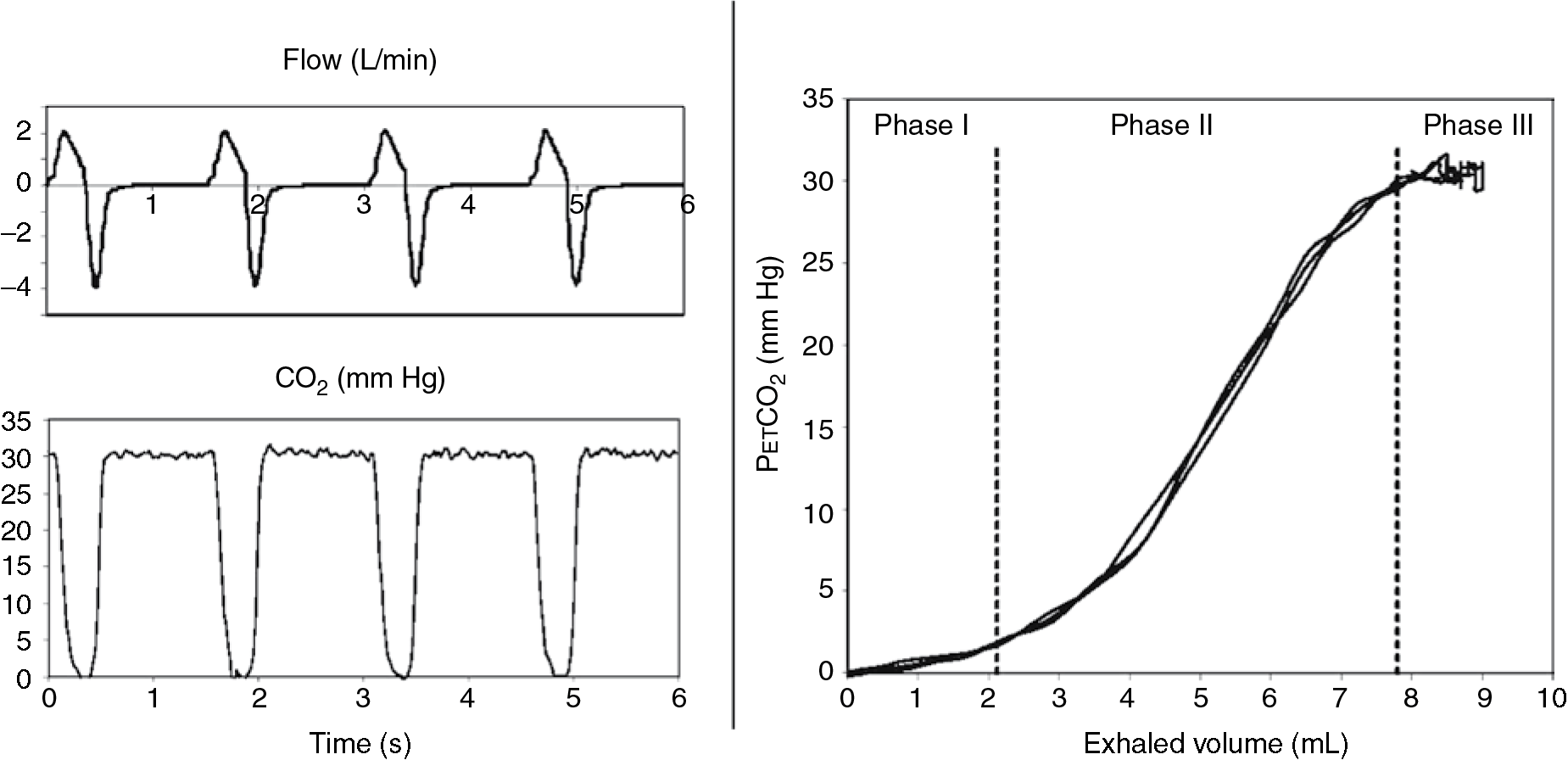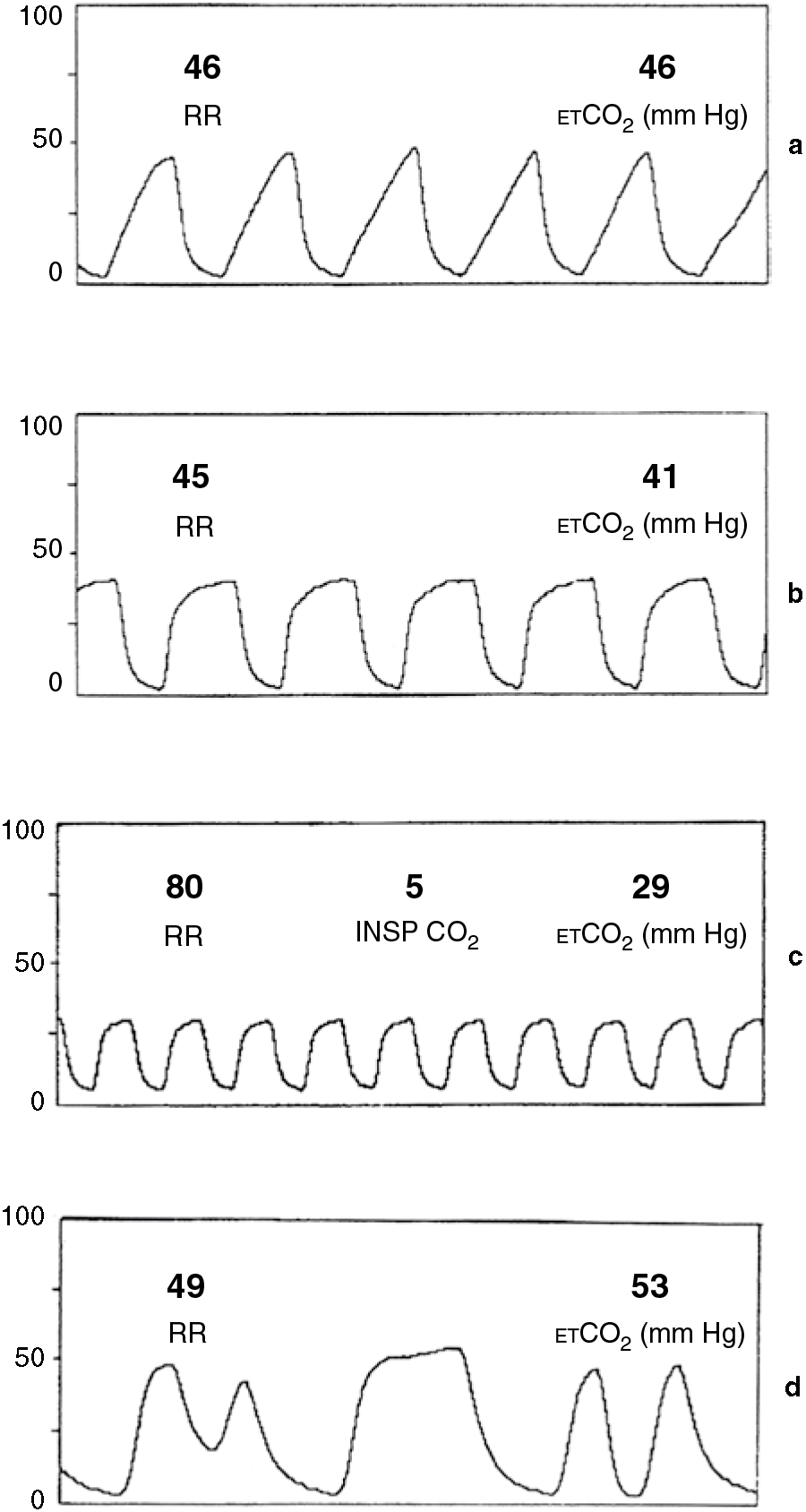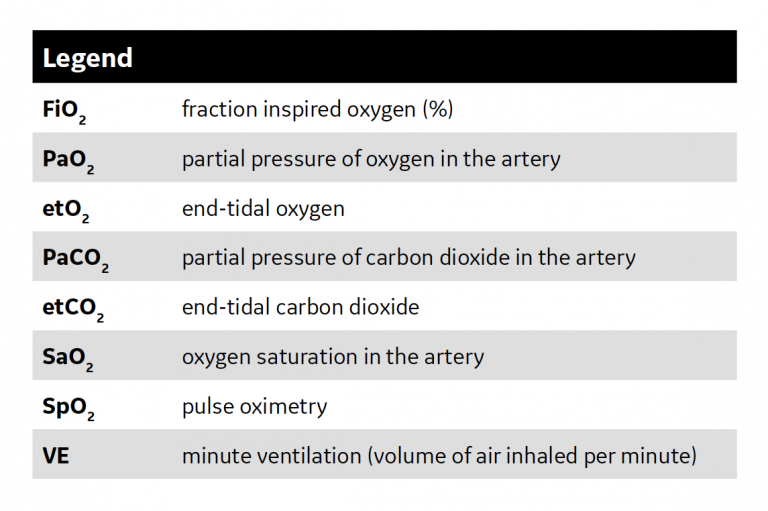end tidal co2 range pediatrics
End-tidal carbon dioxide and defibrillation success in out-of-hospital cardiac arrest. An important use of continuous ETCO 2.
Emdocs Net Emergency Medicine Educationcapnography In The Ed Emdocs Net Emergency Medicine Education
Variability of difference scores was not related to range of mean scores r 08 age r 09 or respiratory rate r 25.
. Target EtCO2 value should be 35-45 mmHg. ETCO 2 can be used to detect trends in PaCO 2 and ETCO 2 alarm limits can be usefully used to maintain PaCO 2 within an acceptable range. End-tidal CO2 monitoring is an exciting non-invasive technology that is more commonly used in the emergency department intensive care unit and in the prehospital setting.
Paiva EF et al. This type of capnometry identified 91 of the instances when the arterial CO 2 pressure was between 34 and 54 mm Hg using an end-tidal range of 29 to 45 mm Hg. 2 See Figure.
Detector During Pediatric Cardiopulmonary Resuscitation. End tidal CO 2 ETCO 2 is a type of non-invasive monitoring of carbon dioxide levels in ventilated neonates 1It provides a constant surveillance of expired CO 2 in ventilated infants. End-tidal carbon dioxide ETco 2 monitoring provides valuable information about CO 2 production and clearance ventilation.
Variability of difference scores was not related to range of mean scores r 08 age r 09 or respiratory rate r 25. An end-tidal capnography waveform is a simple graphic measurement of how much CO 2 a person is exhaling. Utility of end-tidal carbon dioxide detector during stabilization and transport of critically ill children.
The normal end-tidal capnography wave form is basically a rounded rectangle. Children should be ventilated at a. End-tidal CO2 measured by an oralnasal cannula capnometry circuit is a noninvasive method of assessing indirect measurements of Pco2 in a.
Evaluation of An End-Tidal CO 2 Detector During Pediatric Cardiopulmonary Resuscitation. Normal ETCO2 is in the range of 35 to 45 mmHg. To determine the utility of a disposable colorimetric end.
Twenty-two pediatric patients 15 days to 18 years old undergoing FFB and receiving supplemental oxygen were studied prospectively and had continuous PetCO2 and SpO2 measured before and during the procedure bronchoscope at the carina or either main bronchus. Pediatrics 1995 95 3. End-tidal carbon dioxide ETCO 2 monitoring is readily available easily used and a standard of care in the operating suite and in the critical care setting.
The minimum ETco2 value was significantly lower in the anaphylaxis group median interquartile range. The number is called capnometry which is the partial pressure of CO 2 detected at the end of exhalation ranging between 35 - 45 mm Hg or 40 57 kPa. As stated before end tidal is slightly different.
During sedation capnography is often used to assess the breath-to-breath analysis of carbon dioxide concentration. End-tidal CO2 measured by an oralnasal cannula capnometry circuit is a noninvasive method of assessing indirect measurements of PCO2. Utility of end-tidal carbon dioxide detector during stabilization and transport of critically ill children.
Once that has been done you can use an end tidal Co2 monitor as opposed to drawing multiple ABGs. A normal trace appears as a series of rectangular waves in sequence with a numeric reading capnometry that shows the value of exhaled CO2. In fact its commonly called the ventilation vital sign.
End-Tidal Carbon Dioxide as a Measure of Acidosis Among Children with Gastroenteritis. End-tidal values outside this range had a 63 accuracy in predicting hypocarbia or hypercarbia. End-tidal CO 2 monitoring in NICU patients is as accurate as capillary or transcutaneous.
Also called capnometry or capnography this noninvasive technique provides a breath-by-breath analysis and a continuous recording of ventilatory status. Continuous Waveform Capnograpy is written as PETCO2 which stands for patient end-tidal carbon dioxide. Under normal conditions the end tidal CO2 is usually slightly less than the PaCO2 with a normal difference of 25 mmHg.
Many neonatal intensive care units NICU have converted to utilizing transcutaneous CO 2 tcP CO2 monitoringThis study aimed to compare perioperative Et CO2 to tcP CO2 in the. However et CO 2 may be underused in the PED setting. It is best to get an ABG along side the end tidal to calculate the patients shunt.
What Is Normal End Tidal Co2 In Kpa. The use of end-tidal carbon dioxide measurement to guide management of cardiac arrest. In fact its commonly called the ventilation vital sign.
So the short answer is you are right about the ranges 35-45 but that is for actual PaCo2 drawn from an ABG. End-Tidal Carbon Dioxide. 21 Hillier SC Badgwell JM Mcleod ME Creighton RE Lerman J.
Rate of ventilation should be 12-20 breaths per minute bpm for adults if the patient is breathing on their own and 10-12 bpm if youre ventilating them. Analysis from our large and standardized dataset provides information useful in considering the range of values of EtCO 2 likely to be observed in a pediatric sleep laboratory. Accuracy of end-tidal PCO2 measurements using a sidestream capnometer in infants and children ventilated with the Sechrist infant ventilator.
Note that this gradient may be considerably higher in situations where there is an increase in dead space. End-tidal CO 2 Et CO2 is the standard in operative care along with pulse oximetry for ventilation assessmentIt is known to be less accurate in the infant population than in adults. End-tidal CO 2 et CO 2 monitoring is not a new modality in the pediatric emergency department PED and emergency department.
Capnography measures the amount of CO2 present at the end of exhalation end-tidal CO2 or ETCO2 displays a waveform that represents air movement through the respiratory cycle and continuously. PEDIATRIC END TIDAL CO2 DETECTOR. To identify the role of end-tidal carbon dioxide EtCO2 monitoring during polysomnography in evaluation of children with obstructive.
In hyperventilation the CO2 waveform becomes smaller and more frequent and the numeric reading falls below the normal range. It is the standard of care during certain procedures such as intubations and sedations and can be used in variety of clinical situations. End-tidal PCO2 PetCO2 monitoring is not routinely used.
When a capnometer is available and the machine is warmed-up connection to the ventilatory circuit takes. Its main use has been in verifying endotracheal tube position during mechanical ventilation and cardiopulmonary resuscitation but it is being studied and used for other purposes as well. Nagler J et al.

Arterial And End Tidal Carbon Dioxide Difference In Pediatric Intensive Care Topic Of Research Paper In Medical Engineering Download Scholarly Article Pdf And Read For Free On Cyberleninka Open Science Hub

Capnography By Craig Smallwood Rrt For Openpediatrics Youtube

Neonatal Monitoring Chapter 10 Capnography

Table 1 From Capnography In The Pediatric Emergency Department Clinical Applications Semantic Scholar

Carbon Dioxide Monitoring In Children A Narrative Review Of Physiology Value And Pitfalls In Clinical Practice Humphreys 2021 Pediatric Anesthesia Wiley Online Library

Pdf Applications Of End Tidal Carbon Dioxide Etco2 Monitoring In Emergency Department A Narrative Review Semantic Scholar

Ventilator And Clinical Variables In Neonates And Children Download Scientific Diagram

Continuous Capnography In Pediatric Intensive Care Semantic Scholar

End Tidal Capnography Can Be Useful For Detecting Diabetic Ketoacidosis Monitoring Copd Page 2 Of 4 Acep Now Page 2

Covidien Adult And Pediatric Colorimetric Co Detectors Pedicap6 Pedicap Easycapii6 Easycap Ii From 4md Medical

Exhaled End Tidal Carbon Dioxide As A Predictor Of Lactate And Pediatric Sepsis The American Journal Of Emergency Medicine

Neonatal Monitoring Chapter 10 Capnography

Respiratory Monitoring Department Of Pediatrics Uw Madison

End Tidal Carbon Dioxide Semantic Scholar
Transient End Tidal Co2 Elevation During Pediatric Upper End Journal Of Pediatric Gastroenterology And Nutrition

Pdf Capnography In Pediatric Critical Care Unit And Correlation Of End Tidal And Arterial Carbon Dioxide In Ventilated Children

Capnography In The Pediatric Emergency Department Clinical Applications
